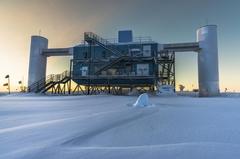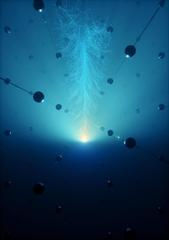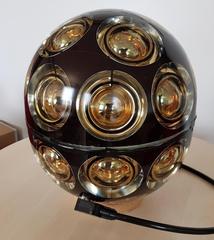URL: https://www.desy.de/news/news_search/index_eng.html
Breadcrumb Navigation
DESY News: Neutrino observatory IceCube receives significant upgrade
News
News from the DESY research centre
Neutrino observatory IceCube receives significant upgrade
The international neutrino observatory IceCube at the South Pole will be considerably expanded in the coming years. In addition to the existing 5160 sensors, a further 700 optical modules will be installed in the perpetual ice of Antarctica. The National Science Foundation in the USA has approved 23 million US dollars for the expansion. The Helmholtz Centres DESY and Karlsruhe Institute of Technology (KIT) are supporting the construction of 430 new optical modules with a total of 5.7 million euros (6.4 million US dollars), which will turn the observatory into a neutrino laboratory. IceCube, for which Germany with a total of nine participating universities and the two Helmholtz Centres is the most important partner after the USA, had published convincing indications last year of a first source of high-energy neutrinos from the cosmos.

The IceCube Neutrino Observatory is located at the Amundsen-Scott station at the South Pole. Credit: IceCube/NSF, Martin Wolf
Neutrinos are among the most mysterious elementary particles. They hardly interact and can easily traverse entire planets, stars and galaxies – they are therefore often referred to as ghost particles. The neutrino observatory IceCube scours the deep Antarctic ice for the shy elementary particles. Below the surface, its extremely light sensitive Digital Optical Modules, or DOMs, watch out for the bluish glow that high-energy neutrinos from outer space can trigger in their very rare collisions in the ice. On 86 long cables, 5160 DOMs have been lowered up to 2.5 kilometres deep in the transparent ice. From the precise measurement of the so-called Cherenkov light triggered by a neutrino collision, the direction of origin and the energy of the incident particle can be reconstructed. Since neutrinos interact so extremely rarely, IceCube monitors a complete cubic kilometre of underground ice.

Deep down in the perpetual ice of Antarctica IceCube watches out for a faint bluish glow that indicates a rare collision of a cosmic neutrino within the ice. Artist's concept: DESY, Science Communication Lab
“With the IceCube upgrade and the later expansion to IceCube-Gen2, this unique neutrino observatory expands our view into space at a crucial point and thus contributes to solving the puzzles about the physics of the highest energy processes in our universe,” says Andreas Haungs, head of the IceCube group at KIT.
The expansion does not only increase the sensitivity of the observatory, it also lowers the energy threshold above which neutrinos can be detected. This allows the properties of the particles to be measured with unprecedented accuracy - IceCube will also become a neutrino laboratory. “Neutrinos are the least understood particles in the standard model of particle physics,” stresses Alexander Kappes, professor at the University of Münster and head of the mDOM project. “They have properties that the Standard Model cannot explain.”

The multi-Pixel Digital Optical Module or mDOM measures 36 centimetres acorss, horizontally. Credit: University of Münster, Alexander Kappes
Observations with IceCube and a large number of other observatories spread across the globe last year led to the first localisation of a cosmic source of high-energy neutrinos. The particles detected by IceCube came from an active galaxy about four billion light years away, at the centre of which a gigantic black hole acts as a natural particle accelerator.
The IceCube neutrino observatory is located at the Amundsen-Scott South Pole Station. The observatory is managed and operated by the Wisconsin IceCube Particle Astrophysics Center (WIPAC) at the University of Wisconsin-Madison. The science programme is run by more than 300 researchers from 52 institutes in 12 countries. After the USA, Germany is the second largest partner in the international project. In addition to the Helmholtz Centres DESY and KIT, the universities of Bochum, Erlangen-Nuremberg, Mainz, Münster and Wuppertal as well as the RWTH Aachen University, the Humboldt University in Berlin and the Technical Universities of Dortmund and Munich are involved.
German university groups are also engaged in the development of optical (TU Munich, Uni Wuppertal) and acoustic (RWTH Aachen) instruments for precise detector calibration, simulation and calibration methods (TU Dortmund, Uni Bochum), as well as the development of novel sensor concepts (Uni Mainz) for IceCube-Gen2. The German Federal Ministry of Education and Research BMBF, which finances 90 percent of the Helmholtz Association's research centres, also supports the universities working on IceCube with funds for joint research projects.



